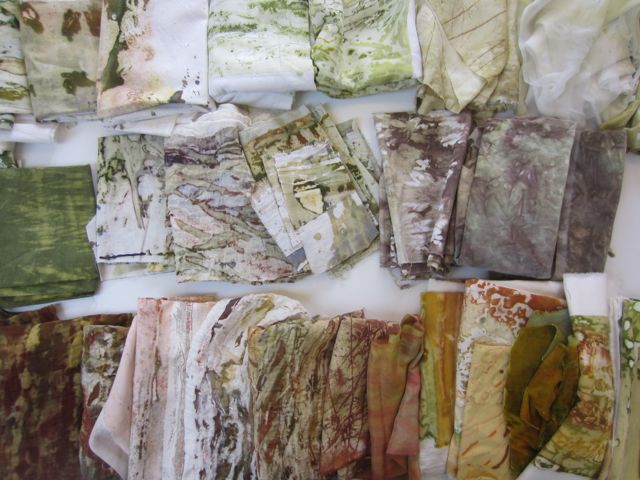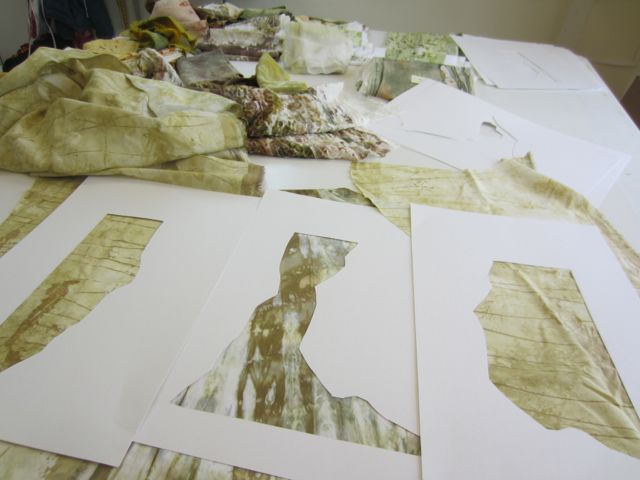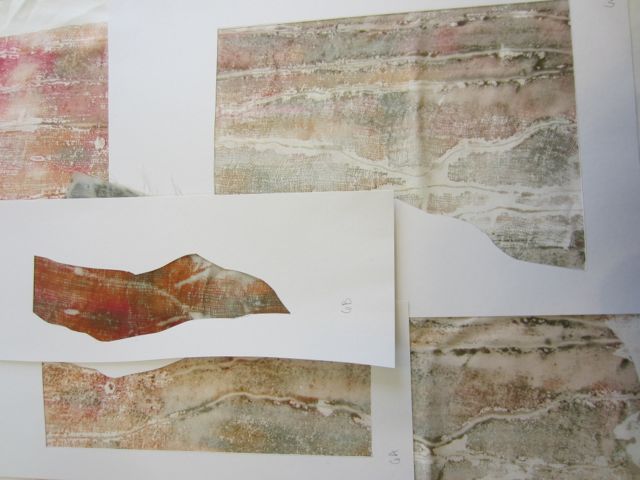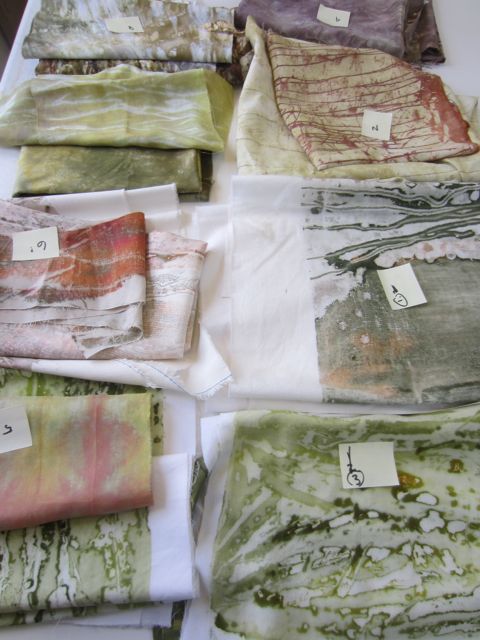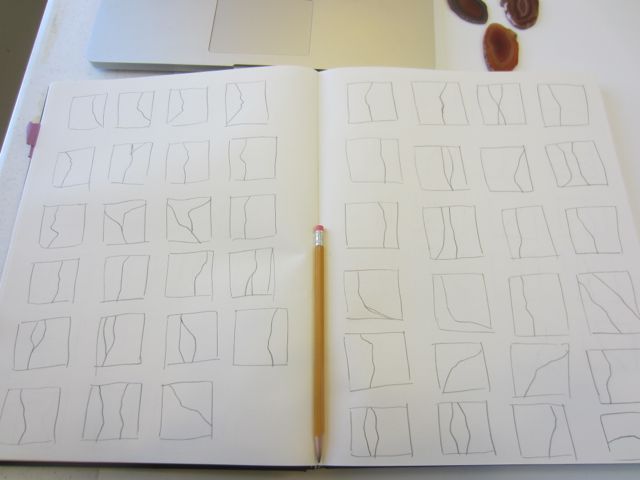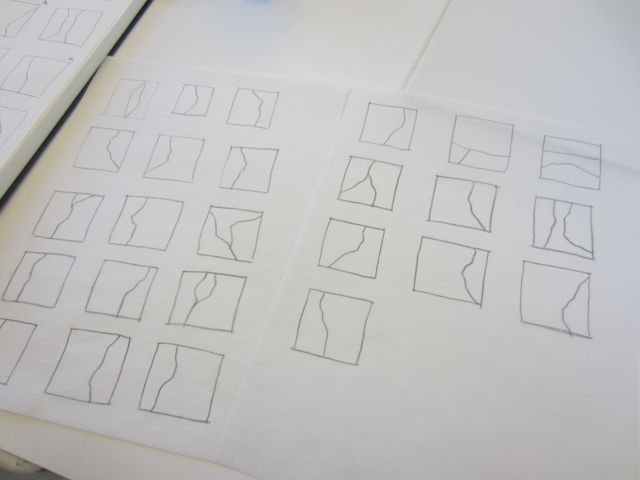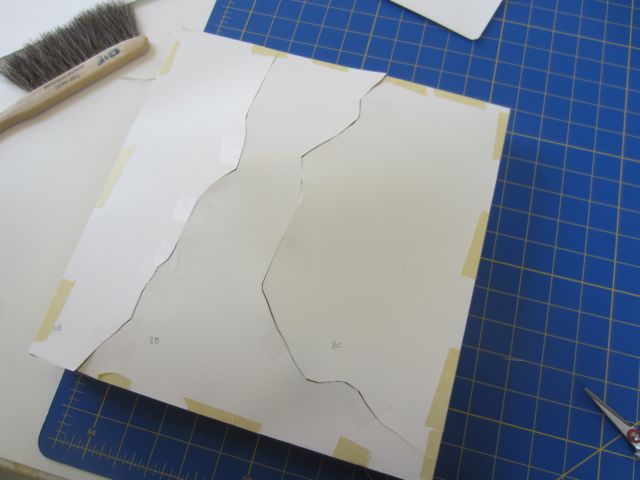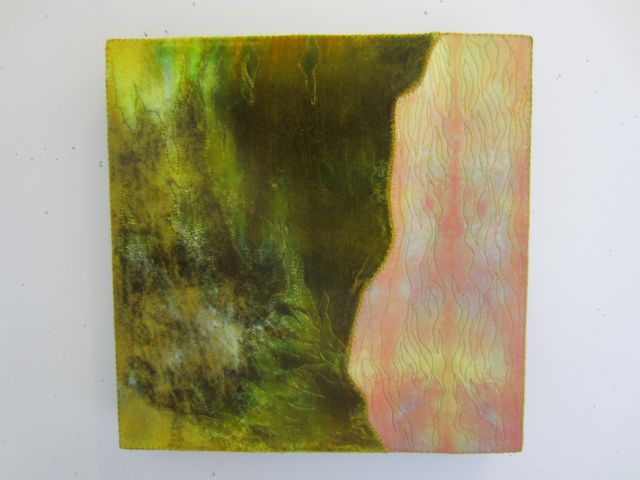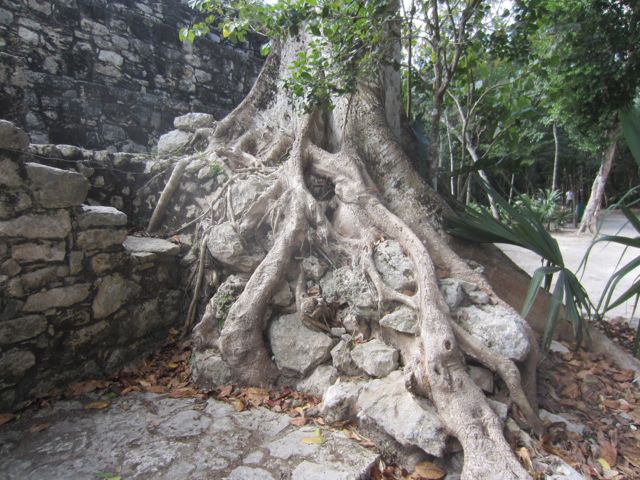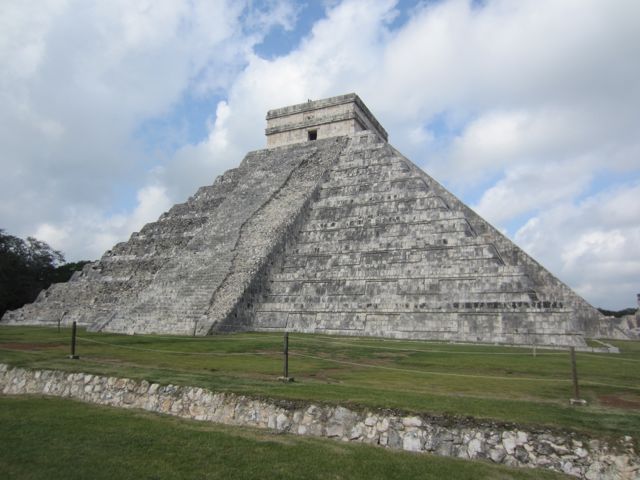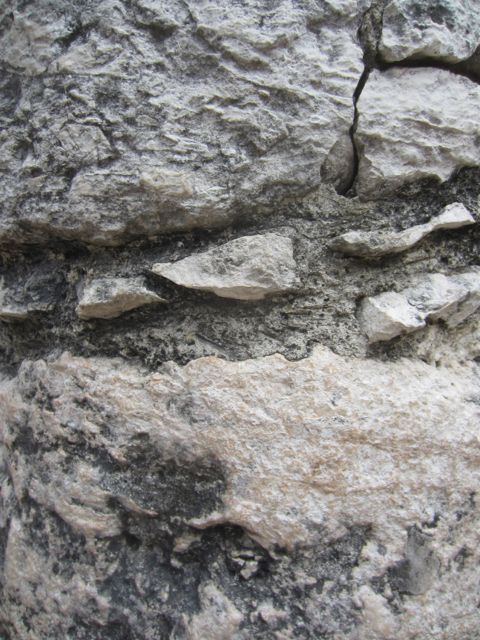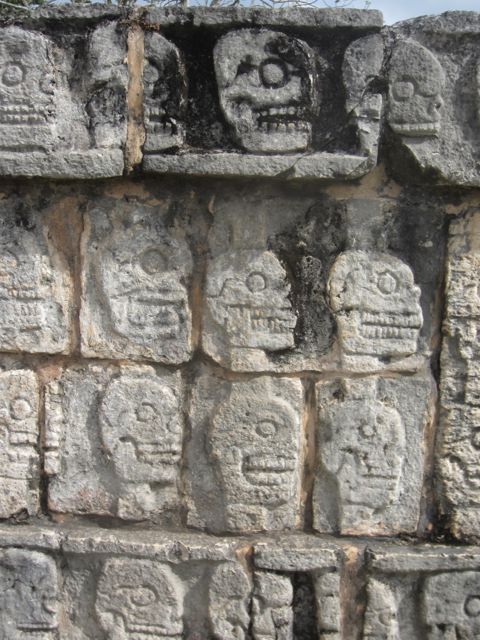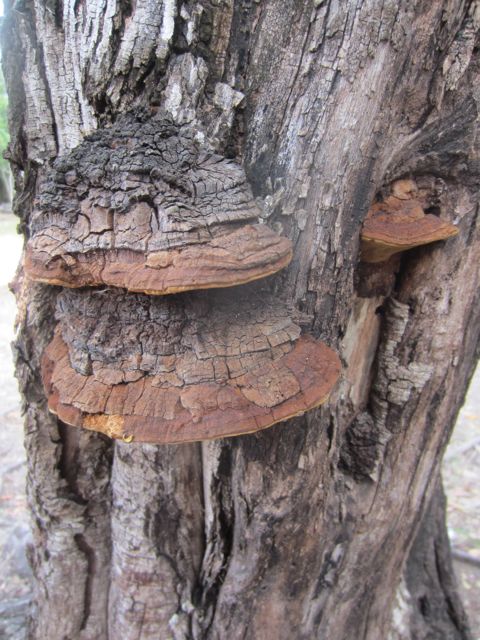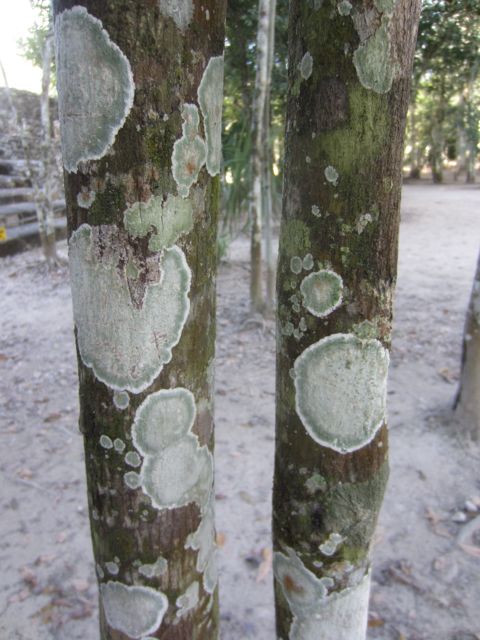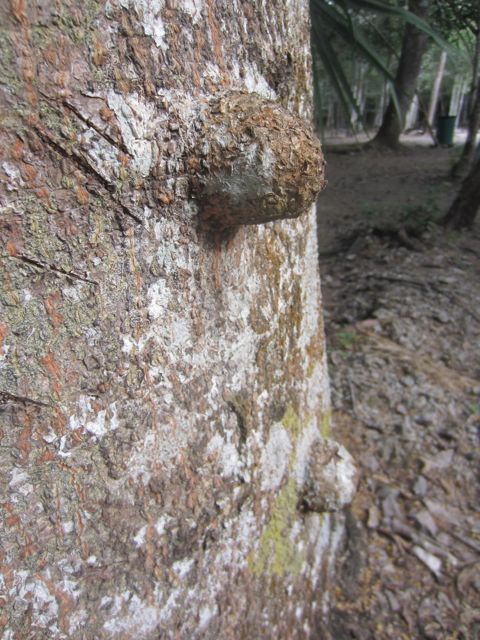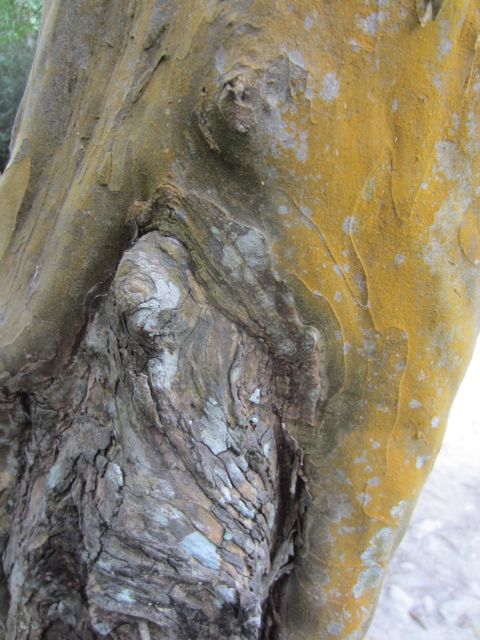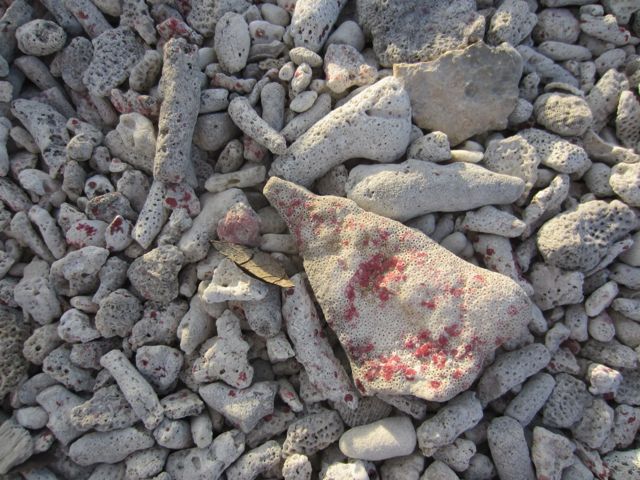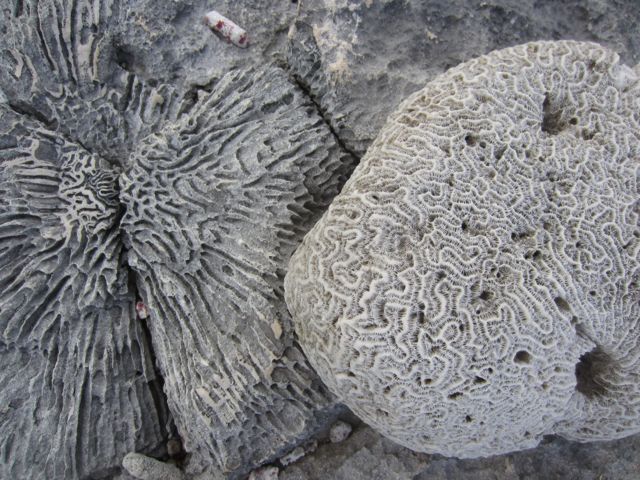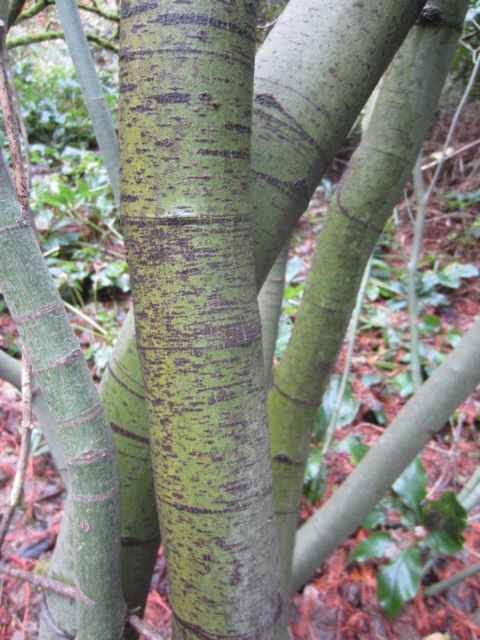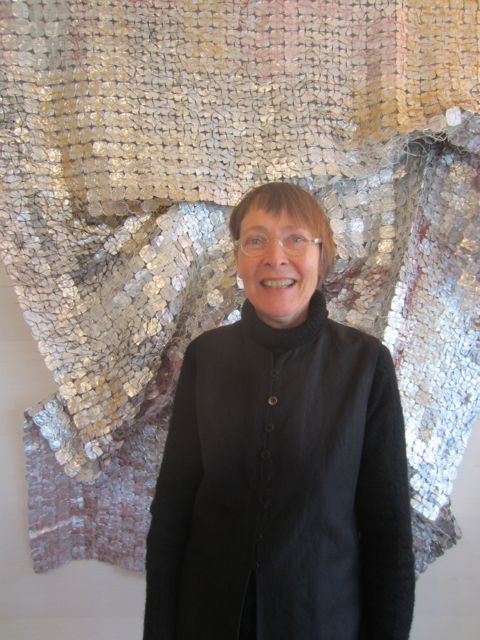
Cottonwood tree felled by beaver with the 520 bridge in the background
Yesterday I explored the urban waterways and beaver trails of Portage Bay and the back roads of Capitol Hill by canoe with Scott Schuldt. He’s an artist I met briefly through Northwest Designer Craftsman and then, more recently, through Facebook. He writes a blog, The View from the Canoe, about his days on the water and his observations there of the changing seasons. I was lucky enough to be invited to come along with him on a trip.
We started our canoe trip in Scott’s driveway. I was kind of nervous when his message on Facebook said that we’d be portaging about a mile and half to the water. I imagined carrying a canoe over my head all that way down the hill and then back up the hill after our paddle. I was quite relieved to see the ingenious portage cart he’s built for his boat, his background as an engineer showing in its elegant efficiency. It was really fun to walk the back streets of Capitol Hill, past beautiful homes with lovely old trees, striding along with a canoe. We got many interested looks and I saw parts of the hill I’d never explored before. Scott did all the work, only accepting a short push up the steepest hill on the way back. It’s obvious he’s well used to doing it himself.

portaging
Scott in an expert on beaver. I knew we had beaver here in Seattle, I’d seen their work at the Meadowbrook retention ponds, but didn’t realize how many and how active they are. It’s quite amazing to see a large tree felled right at the edge of an urban park and to see tall conical lodges next to the freeway on ramp. That juxtaposition of wild life in the city is what made it so fascinating. Scott showed me not only the lodges, but where the beaver had been gnawing and felling limbs, sticks that had been stripped of bark like ears of corn, and scent mounds. I took a whiff of the mud on one those mounds and took in their funky scent. Not bad. As Scott said, no worse than patchouli oil!

characteristic teeth marks of the beaver on the tree's inner bark

the stump sculpted by beaver teeth
One of the nice things about canoeing rather than kayaking is that it’s easy to get in and out of the boat to look at things on land. We stopped and looked at tracks in the soft mud and took a side trip to see an eagle’s nest. I got quite turned around seeing the land from the water rather than the other way around. But Scott was an excellent tour guide. He even brought a thermos of coffee and some homemade chocolate chip cookies to tide us over.

an inlet in the cattails created by the beaver

fine mist on the pussy willows

a pattern created by the dripping rain
And, of course, over the hours of our adventure we talked. About ducks, about beaver, about the plans the Department of Transportation has for these marshlands, about his Artist’s Fellowship at Smoke Farm, about canoe trips, about our families and lives, and about art. We are both self-taught artists and, although we are both working with inspiration from nature, we come to our work from very different places. Scott starts with the written word, observing and documenting extensively before he picks up a single bead.

under the 520 bridge
Scott has a solo show up right now at the Anchor Art Space in Anacortes. He has national recognition in the craft world with his beaded pieces but also makes collections, hand drawn maps, photographs, and videos of his observations. I’ve looked around at his website but think I’ll need to take a trip up there to really get a sense of his work. Sounds like another field trip.

a huge beaver lodge right next to the freeway!
